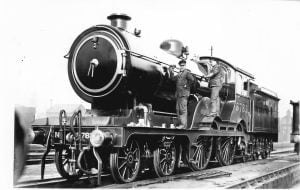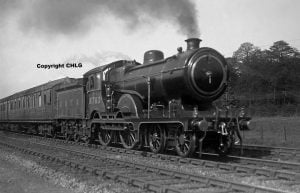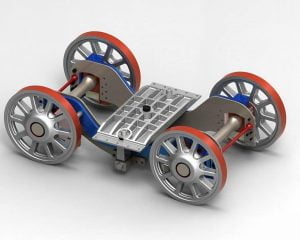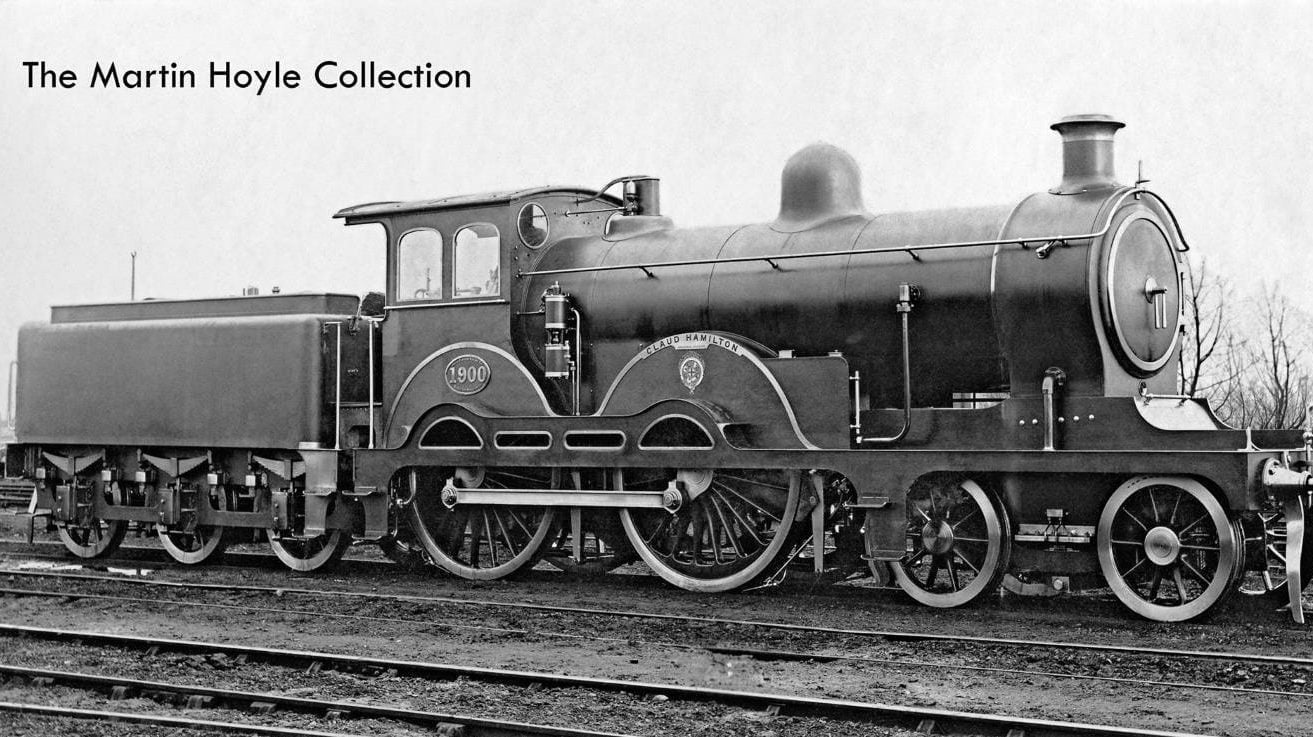This week’s Project Information is based around the LNER D14/15/16s ‘Claud Hamiltons’, one of James Holden’s most successful and popular designs. After looking at the class’ history, we will look into the Claud Hamilton Locomotive Group, their history and construction progress on replica No.8783 named “Phoenix”.
History of the LNER D14s, D15s and D16s
The design dates back to 1900, when the first member of the class, No.1900 “Claud Hamilton” was completed and turned out from Great Eastern Railway’s (GER) Stratford Works.
1900 was named after the GER’s chairman, Lord Claud Hamilton, also soon becoming the nickname for the whole class. It wasn’t long before another was placed for a batch of 10.
The last 10 engines were completed in 1923, under London & North Eastern Railway (LNER) ownership. These engines never carrying GER’s numbers.
Variations

121 engines were built in total, with variations between each batch of 10 built. The main differences being in the boiler, with some engines having Belpaire and others round-top firebox, smokebox size, superheating and diameter of boiler barrel. The D16s, featuring Belpaire firebox, larger diameter boiler (5 foot, 1 1/8 inch) and superheating, were known as ‘Super Clauds’.
The final variation was D15s and D16s rebuilt by Gresley for the LNER, which consisted of replacing Belpaire firebox for round-top type and using piston valves instead of flat valves.
Liveries
Originally, the class was turned out in GER’s Royal Blue livery, lined in Scarlet Red with brass beading and coppers fittings. The LNER repainted the class in lined Apple Green, with the engine’s number and LNER on the tender sides.
During War World 2, the class was repainted in LNER Black like other classes. Finally, British Railways’ (BR) ownership saw the class wear either lined or unlined BR Black, changing to late crest in the late 1950s.
Performance

The Claud Hamiltons were built for express passenger trains, being the GER’s largest passenger engines when first built. They were allocated on trains between Norfolk and London, with the most notable work being done with the “The Norfolk Coast Express” from London Liverpool Street to Cromer, where timings remained similar decades later. In 1906, the class started to be allocated fast night goods trains over the Great Northern and Great Eastern Joint Railway.
1911 saw the introduction of the GER S69s (LNER B12s), which took over the Claud Hamiltons on many of the express passenger trains between Norfolk and London. This resulted in the class being allocated duties further inland, such as Cross Country trains. The displacement of the engines came at a bad time, with improvements such as superheating and bigger boilers being fitted after the class had been moved. This meant the Claud Hamiltons, in their improved form, never showed their true potential, hauling trains well within their capacity.

The first major problems with the class were noted in the 1920s, this being poor steaming. The problem was traced back to the smaller sized coal produced by the LNER’s coal crushers. To solve the poor steaming issue, changes were made to the blastpipe and chimney arrangement, and also the use of a flatter firegrate. These solutions proved successful and fitted to the rest of the engines from 1936.
Under LNER ownership, two members of the class were used on special or Royal trains out of King’s Cross, working alongside Great Northern Railway Atlantics. The LNER also approved working the Claud Hamiltons in doubleheaders, with them doing so most of the 1920s to handle the ever heavier Express trains. The early 1930s saw the all the D14s rebuilt as D15s, with many D15s being rebuilt as D16s as well. Both the D15s and D16s had similar shed allocations to the ones they had when the LNER was formed in 1923.
Decline and withdrawal
The class survived almost fully intact into BR ownership, with 117 of the 121 still running in 1948. Due to the frame cracking caused by the fitting of piston valves, the D16/3s started to be withdrawn first, in 1945.

The mid-1950s saw a rapid reduction of the class, with the last members of the Claud Hamiltons being withdrawn in 1960, this being a D16/3, No.62613. Despite the important work some members of the class did, like hauling royal trains, none were saved for preservation, even though they lasted until 1960 when the preservation movement was gaining popularity.
History of the Claud Hamilton Locomotive Group
The mission statement for the group is “To build and operate a standard gauge D16/2 “Claud Hamilton” steam locomotive for use on heritage railways”. The replica 8783 “Phoenix” will, therefore, be a ‘Super Claud’, featuring 5ft 1 1/8in diameter boiler, superheater, Belpaire firebox and extended smokebox.

8783 was chosen as the engine to produce a replica of due to the original engine being one of the two engines allocated to regular Royal trains, being kept in immaculate condition. The engine will also carry the name “Phoenix”. When completed the engine will appear in LNER livery.
The group is run by 18 to 25-year-olds, who all share the passion to see a Claud Hamilton in steam. As well as producing the engine some steam enthusiasts all over the country, the Group are also doing the project for young people, hoping to educate and gain younger generation people to get involved with railway preservation.
Progress on far on Building 8783 “Phoenix”

Most work on building 8783 has been on producing Computer Aided Design (CAD) drawings, but physical parts are being produced. The first parts produced were the plates for the frame in Summer 2016. The next parts to be produced are the drag beams, when suitable finance is available. The pattern for the nameplate has been completed, ready for casting them. The pattern for the bogie’s wheels is the same as the one The Holden F5 Steam Locomotive Trust are using for building their LNER F5. The two Groups are working together to produce parts, reducing the cost for both of them. Construction is planned to take 10 to 20 years.
If you would know further information or to support the Claud Hamilton Locomotive Group, please visit their website here
It’s time to wrap up this week’s Project Information. We still have a few more projects to completed before we have covered all the New Build Projects.
If you would like us to feature your project, get in touch 🙂





Responses
I do understand the logic of the superheater inclusion, as it did improve the performance etc. However, the regretful aspect is that the Clauds were considered one of the finest looking locomotives ever produced. I know looks aren`t a big factor in the world of commerce, etc. but these were historic engines and I feel that, from an historic viewpoint – plus the fact that they were certainly very good engines within the era of being built, that a build of the original design would have been of extreme interest, in memory of Mr. Holden.
I second this. I would be fine if it were a Belpaire Claud, but newly building a full on large boiler rebuilt style Claud instead of an original GER styled one doesn’t make as much sense to me.